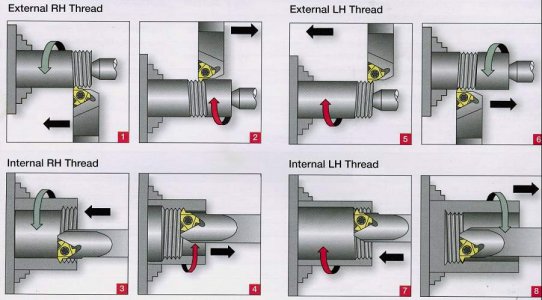OK, as promised, I thought about this and drew some conclusions and to confirm my feeble thinking, did some net-searching.
Yep, in the general case, you need to keep the half-nuts engaged the whole time. There are some exceptions based on tricks you can play depending on the leadscrew pitch and the length of where you decide to disengage/re-engage the leadscrew. For example, with certain teeth gears and an 8TPI screw, every 5" happens to be an exact length where you get away using the standard technique. Generally speaking, since the "restrictions" of doing it that way suck just as much as keeping the halfnuts engaged, I'll stick with the way I know.
-Sure would be nice to have a metric leadscrew but, swapping the halfnuts would not be easy on my machine.
Ray


